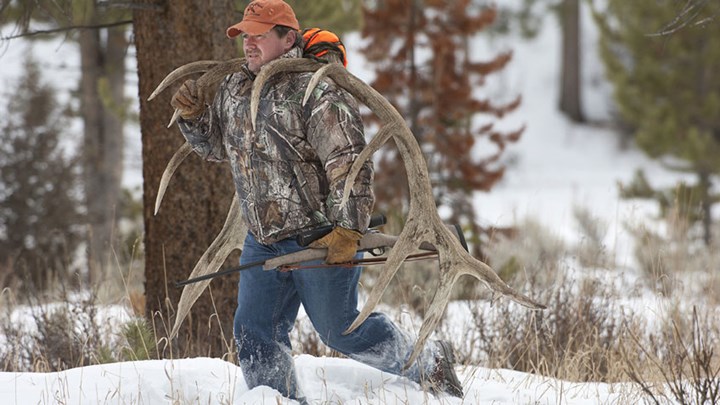
by Tim Irwin - Wednesday, July 31, 2019

With nonresident hunting licenses commanding often over-the-top fees and limited by a Rubic’s Cube of special drawings and baffling regulations, it makes a hunter pine for the simplicity of days gone by. You would think.
While technology has made it simpler to research harvest data, management units and track preference points, licensing hassles have not subsided significantly. Confusing regulations and what has been perceived as discrimination against nonresident sportsmen has a long history. One that goes back to the very beginning of hunting laws.
General hunting licenses came in vogue in the decades before the turn of the 20th century. Market hunting was straining wildlife resources, especially whitetail deer in the East. Blocking nonresidents from hunting grounds was the course of least resistance in many states. Nonresident hunting licenses eventually followed, then resident permits.
Blocking nonresidents from hunting grounds was the course of least resistance in many states.Among the first hunting regulations was a Maryland law enacted in 1872 that required a $20 license to use a sink box on the Susquehanna Flats. Only Maryland residents qualified for the license.
Missouri banned all nonresident hunters in 1879. Wyoming did the same in 1886, but nine years later issued nonresident licenses for $20. In 1899, Maine instituted a $6 nonresident license. A resident license was $4.
Michigan was among the first states to institute a general resident hunting license in 1895, largely to prevent the decimation of the state’s deer herd. Residents paid $5, nonresidents $25.
In 1899, a Minnesota resident license was 25¢. A nonresident license was $25. For a time, Washington State took a simplistic route, issuing both resident and nonresident hunting licenses for $1.
But restrictions on nonresident hunters goes back much further. In 1714, New Jersey law banned nonresidents from gathering oysters. The prohibition remained in place for more than 200 years.
In 1745, the laws of North Carolina mandated that any person “not possessed of a settled habitation” in the province be required to have a certificate that he had planted and tended 5,000 hills of corn before they were permitted to hunt deer. Twenty-three years later the law was amended to require ownership of a minimum of 100 acres and moved the benchmark for hills of corn tended to 10,000.
A law enacted in December of 1858 prohibited Georgia nonresidents from hunting or fishing within the limits of the state, largely to prevent outsiders from having conversations with slaves.
For an intriguing, in-depth look at the history of hunting licenses, search online for the book “Hunting Licenses, Their History, Objects and Limitations” written by T. S. Palmer. First published in 1904, the book provides a context for our dreams that state fish and game departments around the country will simplify the licensing process.
For a final word on the topic, we hunters recognize, of course, that wildlife needs resident and nonresident hunters alike. Nonresident hunting licenses give nonresident hunters the opportunity to contribute to a given state’s wildlife programs to protect and manage legal, regulated hunting into the future.
About the Author: Tim Irwin was an editor at American Hunter from 1979 to 1981. He transitioned from writing the articles in major outdoor magazines to creating the advertising in them. For more than 30 years he owned and operated The Madison Agency, developing marketing and advertising strategies for major shooting sports companies including Realtree camouflage, Walls Industries and Hunter’s Specialties. His photographs have provided authenticity to advertising for Lecia Sports Optics, Zeiss Optics, Beretta, Bennelli, Burris and Uberti. Irwin's passion in life is wildlife photography. His first book, a coffee table collection of whitetail images, is scheduled for release late this year. A second, on Western big game, will follow shortly thereafter. Irwin is also a contributing editor at SHOT Business. His mini-ranch in Montana’s spectacular Madison Valley is the perfect base of operations for his numerous book projects.
Follow NRA Hunters' Leadership Forum on Twitter @HuntersLead.
E-mail your comments/questions about this site to:
[email protected]
Proudly supported by The NRA Foundation and Friends of NRA fundraising.
